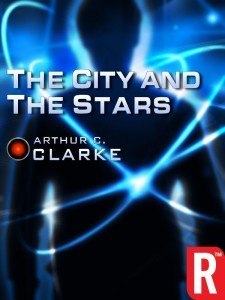A billion years in the future, humanity lives enclosed in a great dome, and, with the help of a central computer, has evolved to be essentially immortal. Art, philosophy, and mathematics contentedly amuse everyone in the vast city of Diaspar, except for Alvin, who wants to know what’s beyond. Not only has no one ever left or entered in the city since it’s inception, everyone has a deep-seated fear to even approach the boundary of the dome, in part due to a story that long ago the Invaders banished humans from space, and told them if they wanted to live they would never leave Earth again.
As Alvin reaches adulthood, he rejects his childhood fantasy of conforming to the standards of his friends, parents, and tutor Jeserac, and begins his quest to learn whatever he can of the outside world. He meets Khedron the Jester, a man who occasionally creates a little chaos in the ordered world of Diaspar. Alvin has a title himself, and as a Unique, his existence is brand new, whereas everyone surrounding him has lived countless previous lives. Together they find a way out of the city through an underground subway system, but it is Alvin alone who is brave enough board the car.
The City and the Stars is a testament to the beginnings of science fiction. Humankind’s fear of the unknown, divergent societies, religions’ power to limit questioning, the potential risks of technologies taken too far, and the beginnings and endings of consciousness, not just for humans, but for computers and aliens alike. The characters are more archetypes than real people, but the ideas are BIG, and carry the story to a well-resolved ending of an era.
“Long ago the signalling had become no more than a meaningless ritual, now maintained by an animal which had forgotten to learn and a robot which had never known to forget.”
